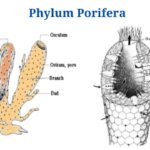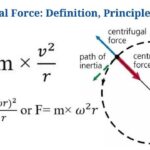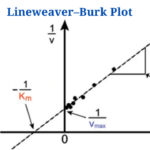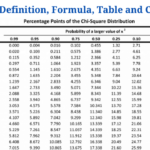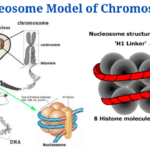What is Chromosome ?
A chromosome is a thread-like structure made up of a single molecule of DNA (Deoxyribonucleic acid) and proteins that carries some or all of an organism’s genetic materials. It is found in the nucleus or nuclear region of the cytoplasm.
- Only during the metaphase of the cell cycle, when the chromosomes line up in the centre of the cell, are these chromosomes visible under a light microscope.
- Because they lack a nucleus, prokaryotes have a single circular chromosome that is arranged in the nucleoid region of the cytoplasm.
- Some prokaryotes’ cytoplasm may include extrachromosomal DNA in the form of plasmids. These make horizontal gene transfer easier.
- The chromosome is connected to packaging proteins in eukaryotic species, which prevent chromosomes from becoming unmanageable.
- The chromatin fibres wrap eukaryotic chromosomes into a compact structure called chromatin. The extraordinarily lengthy chromosomes can fit into a nucleus because the chromosomes are condensed.
- Some eukaryotes’ mitochondria and chloroplasts may have an extra chromosome not found in the nucleus.
- During different stages of the cell cycle, the shape of chromosomes changes. During distinct periods of cell division, chromosomes may uncoil, replicate, and divide.
- Human chromosomes are divided into two types: autosomes, also known as body chromosomes, and allosomes, commonly known as sex chromosomes.
- Humans have 46 chromosomes in total, with 23 pairs of chromosomes, 22 pairs of autosomes, and a pair of sex chromosomes.
- These chromosomes contain all of the genetic material required for a variety of functions, including protein creation, division, and reproduction.
- Chromosomes are highly controlled structures that are responsible for sexually reproducing organisms’ genetic diversity.
- The chromosomes are duplicated in asexual reproduction, and equal genetic material is passed to the daughter cells.
- The process of crossing over during meiosis causes genetic diversity during sexual reproduction.
- Chromosome abnormalities can cause a variety of chromosomal problems, and gene mutations can sometimes lead to cancer.
Created with Bio Render
What is PhD : Meaning, How to Do, Benefits, Full Details
What are Chromatids ?
A chromatid is a duplicated chromosome’s identical half. After a chromosome is duplicated, it splits into two identical parts, each of which is referred to as a chromatid.
- Because chromatids are generated after the chromosome has uncoiled, they are less condensed than chromosomes.
- Sister chromatids are chromatids that are produced from the same chromosome and are joined in the middle by a centromere.
- Non-sister chromatids, in which two chromatids from two separate chromosomes are joined by chiasmata for the exchange of genetic material, are another type of chromatid.
- Chromatids are only present during cell division, when the chromosome repeats in order to increase the DNA’s mass. After that, the DNA is split into two chromatids, both of which contain the identical genetic information.
- The chromatids split and mature into individual chromosomes as cell division occurs.
- As a result, chromatids are only transient structures that exist to aid in the duplication and separation of chromosomes.
- Homozygous refers to chromatids that are genetically identical. However, mutations can cause modifications in one or both of the chromatids, resulting in heterozygous chromatids in some situations.
- During the process of cell division known as meiosis, chromatids play a crucial role. Non-sister chromatids (one from the paternal chromosome and the other from the maternal chromosome) form charismata during prophase I of meiosis I to exchange genetic material.
- This is an important occurrence in sexual reproduction because it ensures genetic variability and variation within the species.
Unlike chromosomes, chromatids are incapable of transcribing proteins
Difference Between Chromosome and Chromatid
(Chromosome vs Chromatid)
| Basis for Comparison | Chromosome | Chromatid |
| Definition |
A chromosome is a thread-like structure made up of a single molecule of DNA and proteins that carries some or all of an organism’s genetic resources. It is found in the nucleus or nuclear area of the cytoplasm. |
A chromatid is a duplicated chromosome’s identical half. After a chromosome is duplicated, it splits into two identical pieces, known as chromatids. |
| Compactness | Chromatids are more compact than chromosomes. | Unlike chromosomes, chromatids are less condensed. |
| Consists of | A single double-stranded DNA molecule makes up a chromosome. | A centromere connects two double-stranded DNA molecules in the centre of chromatids. |
| Structure | The structure of chromosomes is like a thin ribbon. | Chromatids comprise of a lean and elongated fibrous structure. |
| Nature | Homologous chromosomes are not alike to each other. | Homologous or Homozygous sister chromosomes are alike. |
| DNA | DNA in a chromosome is tightly packed. | The DNA molecule is free because it is unwounded. |
| Present | Chromosomes are found in all cells at all times during their lives. | Chromatids are created at some point in the interphase and stay alive until the metaphase of cell division. |
| Centromeres | Chromosomes do not have centromeres. | Chromatids are linked to the center with a centromere. |
| Duplication | Chromosomes are capable of replication or duplication. | Chromatids cannot replicate or duplicate. |
| Protein synthesis | Chromosomes contain genetic information that can be translated into protein molecules. | Chromatids are not engaged in the making of macromolecules such as proteins. |
| Function | Chromosomes hold genetic information and are thus important in the transmission of genetic information between generations of organisms. | After cell division, chromatids assist in maintaining the right amount or number of DNA in the cell. |
Click Here for Complete Biology Notes
Chromosome Vs Chromatid Citations
- https://www.jigidi.com/jigsaw-puzzle/338kk6jp/quiz-how/
- https://www.thoughtco.com/understanding-the-cell-cycle-373391
- https://www.difference.wiki/sister-chromatids-vs-non-sister-chromatids/
- https://www.biologyonline.com/dictionary/non-sister-chromatid
- https://quizlet.com/241055510/bs-161-chapter-11-homework-questions-flash-cards/
- https://pediaa.com/difference-between-chromosome-and-chromatid/
- https://en.wikipedia.org/wiki/Chromosomes
- https://courses.lumenlearning.com/wm-biology1/chapter/reading-dna-packaging-in-eukaryotes-and-prokaryotes/
- https://answersdrive.com/what-phase-of-mitosis-do-the-chromosomes-become-visible-6320192
Related Posts
- Phylum Porifera: Classification, Characteristics, Examples
- Dissecting Microscope (Stereo Microscope) Definition, Principle, Uses, Parts
- Epithelial Tissue Vs Connective Tissue: Definition, 16+ Differences, Examples
- 29+ Differences Between Arteries and Veins
- 31+ Differences Between DNA and RNA (DNA vs RNA)
- Eukaryotic Cells: Definition, Parts, Structure, Examples
- Centrifugal Force: Definition, Principle, Formula, Examples
- Asexual Vs Sexual Reproduction: Overview, 18+ Differences, Examples
- Glandular Epithelium: Location, Structure, Functions, Examples
- 25+ Differences between Invertebrates and Vertebrates
- Lineweaver–Burk Plot
- Cilia and Flagella: Definition, Structure, Functions and Diagram
- P-value: Definition, Formula, Table and Calculation
- Nucleosome Model of Chromosome
- Northern Blot: Overview, Principle, Procedure and Results



